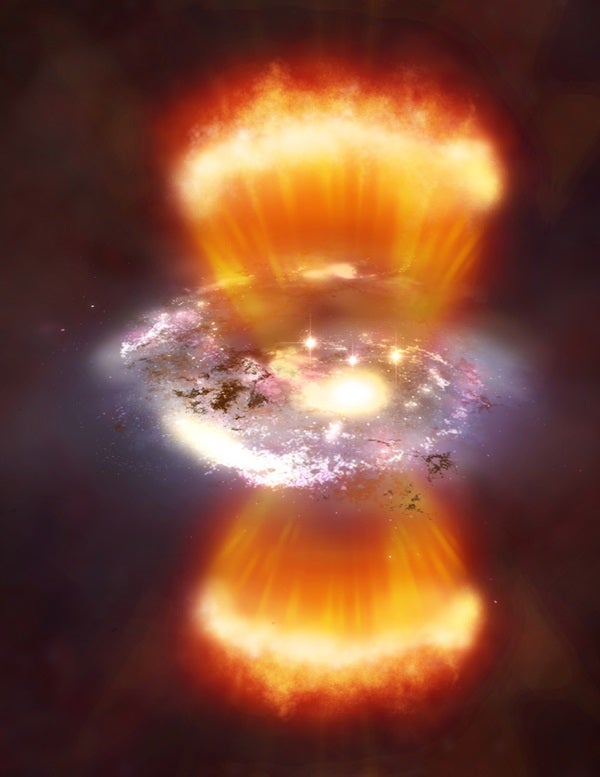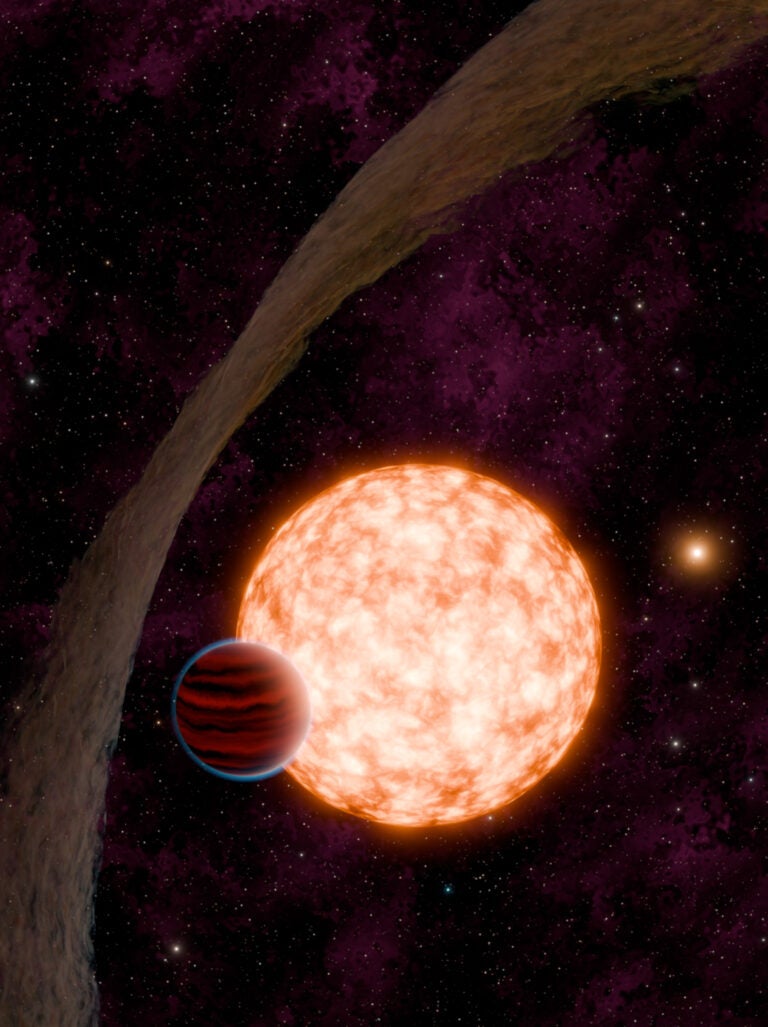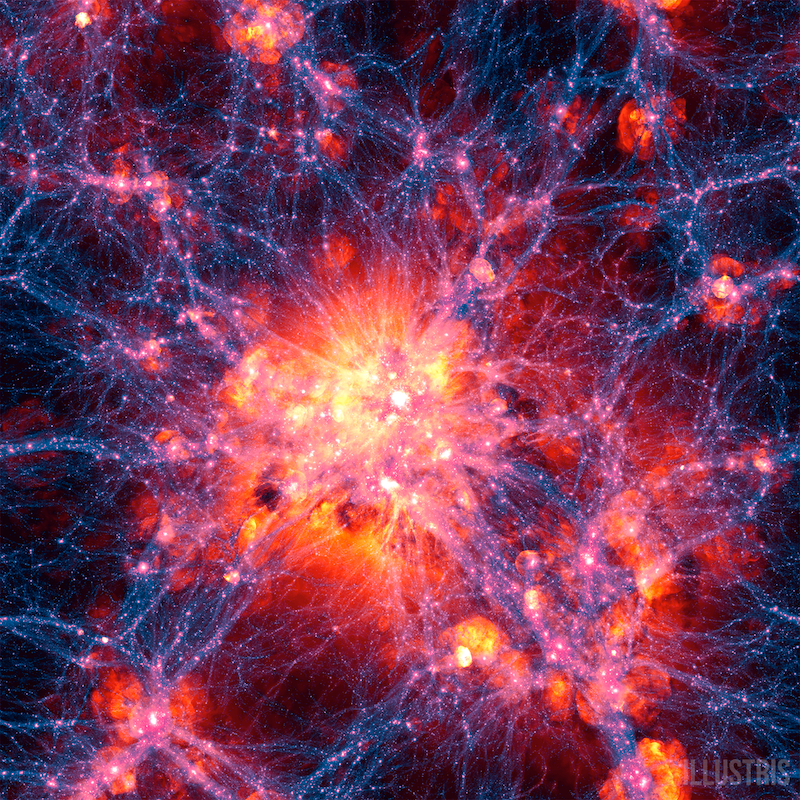The scientists used the European Space Agency’s (ESA) Herschel Space Observatory, an infrared telescope with a mirror 3.5 meters in diameter, launched in 2009. They studied the distant objects in detail with the Spectral and Photometric Imaging Receiver (SPIRE) camera, obtaining solid evidence that the galaxies are forming stars at a tremendous rate and have large reservoirs of gas that will power the star formation for hundreds of millions of years.
“These Herschel-SPIRE measurements have revealed the new population of galaxies to be hotter than expected, due to stars forming far much more rapidly than we previously believed,” said Scott Chapman from the Institute of Astronomy in Cambridge, England.
The galaxies are so distant that the light we detect from them has been traveling for more than 11 billion years. This means that we see them as they were about 3 billion years after the Big Bang. The key to the new results is the recent discovery of a new type of extremely luminous galaxy in the early universe. These galaxies are faint in visible light as the newly formed stars are still cocooned in the clouds of gas and dust within which they were born. This cosmic dust, which has a temperature of around –400° Fahrenheit (–240° Celsius), is much brighter at the longer, far infrared wavelengths observed by the Herschel satellite.
A related type of galaxy was first found in 1997 (but not well understood until 2003) using the SCUBA camera attached to the James Clerk Maxwell Telescope in Hawaii, which detects radiation emitted at even longer submillimeter wavelengths. But these distant submillimeter galaxies were thought to only represent half the picture of star formation in the early universe. Since the Submillimeter Common-User Bolometer Array (SCUBA) preferentially detects colder objects, it was suggested that similar galaxies with slightly warmer temperatures could exist but have gone largely unnoticed.
Chapman and others measured their distances using the Keck optical telescope on Hawaii and the Plateau de Bure submillimeter observatory in France, but were unable to show that they were in the throes of rapid star formation.
Herschel is the first telescope with the capability to detect these galaxies at the peak of their output, so Chapman joined forces with the HerMES team, led by Seb Oliver from the University of Sussex, England, and Jamie Bock from Caltech, Pasadena, California, who were undertaking the largest survey of galaxies with Herschel.
With the Herschel observations focused on around 70 galaxies in the constellation Ursa Major, the scientists acquired the missing piece of evidence to confirm that these galaxies represent a crucial episode in the build-up of large galaxies around us today, such as our own Milky Way.
“With the data we had before, we couldn’t tell exactly where the infrared light from these galaxies comes from,” said Rob Ivison from the University of Edinburgh, Scotland. “But using SPIRE, we can see that this is the signature of star formation.”
The new galaxies have prodigious rates of star formation, far higher than anything seen in the present-day universe. They probably developed through violent encounters between hitherto undisturbed galaxies, after the first stars and galaxy fragments had already formed. Nonetheless, studying these new objects gives astronomers an insight into the earliest epochs of star formation after the Big Bang.
“It was amazing and surprising to see the Herschel-SPIRE observations uncover such a dramatic population of previously unseen galaxies,” said Isaac Roseboom from the University of Sussex.
“We are really blown away by the tremendous capability of Herschel to probe the distant universe,” said Seb Oliver, also from Sussex. “This work by Scott Chapman gives us a real handle on how the cosmos looked early in its life.”
With the new discovery, the astronomers have provided a more accurate census of some of the most extreme galaxies in the universe at the peak of their activity. Future observations will investigate the details of the galaxies’ power source and try to establish how they will develop once their intense bursts of activity come to an end.
The scientists used the European Space Agency’s (ESA) Herschel Space Observatory, an infrared telescope with a mirror 3.5 meters in diameter, launched in 2009. They studied the distant objects in detail with the Spectral and Photometric Imaging Receiver (SPIRE) camera, obtaining solid evidence that the galaxies are forming stars at a tremendous rate and have large reservoirs of gas that will power the star formation for hundreds of millions of years.
“These Herschel-SPIRE measurements have revealed the new population of galaxies to be hotter than expected, due to stars forming far much more rapidly than we previously believed,” said Scott Chapman from the Institute of Astronomy in Cambridge, England.
The galaxies are so distant that the light we detect from them has been traveling for more than 11 billion years. This means that we see them as they were about 3 billion years after the Big Bang. The key to the new results is the recent discovery of a new type of extremely luminous galaxy in the early universe. These galaxies are faint in visible light as the newly formed stars are still cocooned in the clouds of gas and dust within which they were born. This cosmic dust, which has a temperature of around –400° Fahrenheit (–240° Celsius), is much brighter at the longer, far infrared wavelengths observed by the Herschel satellite.
A related type of galaxy was first found in 1997 (but not well understood until 2003) using the SCUBA camera attached to the James Clerk Maxwell Telescope in Hawaii, which detects radiation emitted at even longer submillimeter wavelengths. But these distant submillimeter galaxies were thought to only represent half the picture of star formation in the early universe. Since the Submillimeter Common-User Bolometer Array (SCUBA) preferentially detects colder objects, it was suggested that similar galaxies with slightly warmer temperatures could exist but have gone largely unnoticed.
Chapman and others measured their distances using the Keck optical telescope on Hawaii and the Plateau de Bure submillimeter observatory in France, but were unable to show that they were in the throes of rapid star formation.
Herschel is the first telescope with the capability to detect these galaxies at the peak of their output, so Chapman joined forces with the HerMES team, led by Seb Oliver from the University of Sussex, England, and Jamie Bock from Caltech, Pasadena, California, who were undertaking the largest survey of galaxies with Herschel.
With the Herschel observations focused on around 70 galaxies in the constellation Ursa Major, the scientists acquired the missing piece of evidence to confirm that these galaxies represent a crucial episode in the build-up of large galaxies around us today, such as our own Milky Way.
“With the data we had before, we couldn’t tell exactly where the infrared light from these galaxies comes from,” said Rob Ivison from the University of Edinburgh, Scotland. “But using SPIRE, we can see that this is the signature of star formation.”
The new galaxies have prodigious rates of star formation, far higher than anything seen in the present-day universe. They probably developed through violent encounters between hitherto undisturbed galaxies, after the first stars and galaxy fragments had already formed. Nonetheless, studying these new objects gives astronomers an insight into the earliest epochs of star formation after the Big Bang.
“It was amazing and surprising to see the Herschel-SPIRE observations uncover such a dramatic population of previously unseen galaxies,” said Isaac Roseboom from the University of Sussex.
“We are really blown away by the tremendous capability of Herschel to probe the distant universe,” said Seb Oliver, also from Sussex. “This work by Scott Chapman gives us a real handle on how the cosmos looked early in its life.”
With the new discovery, the astronomers have provided a more accurate census of some of the most extreme galaxies in the universe at the peak of their activity. Future observations will investigate the details of the galaxies’ power source and try to establish how they will develop once their intense bursts of activity come to an end.










